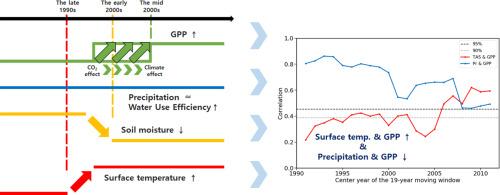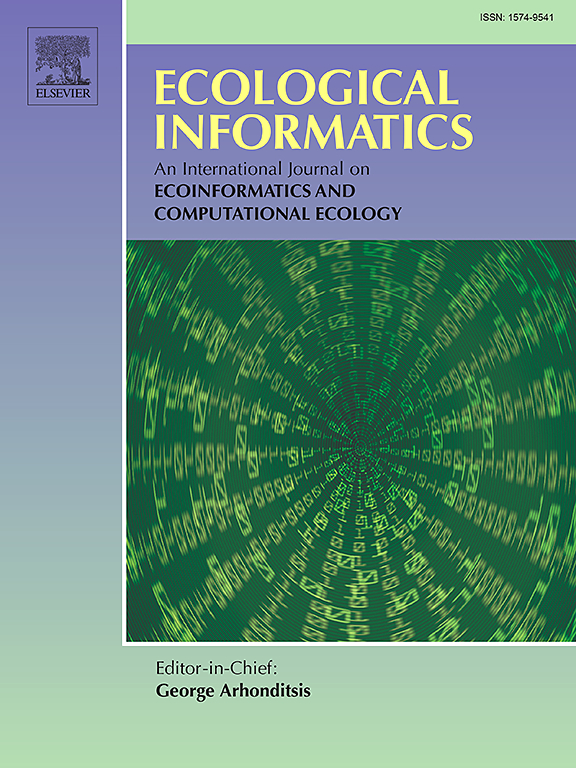东亚地区气候变量与植被碳吸收关系的变化
IF 7.3
2区 环境科学与生态学
Q1 ECOLOGY
引用次数: 0
摘要
为了了解CO2上升背景下东亚地区的碳循环,我们分析了1982 - 2020年的土地碳循环数据集(TRENDY),研究了植被生长期(3 - 9月)植被碳吸收与降水和地表温度两个气候变量之间的关系。结果表明:21世纪初以来,东亚地区初级生产总值(GPP)与地表温度的关系呈增强趋势,而GPP与降水的关系呈减弱趋势。进一步分析表明,gpp -地表温度关系的增强主要是由于CO2施肥效应和地表温度显著升高的共同作用,导致土壤水分减少,植被水分利用效率提高。这似乎导致了长期GPP的增加,同时降水没有显著变化。因此,近几十年来植被碳吸收对降水的依赖程度降低,与地表温度的相关性增加。这一结果表明,植被碳吸收与气候变量之间的关系是非平稳的,因此需要认真考虑通过植树造林适当制定碳减缓计划。本文章由计算机程序翻译,如有差异,请以英文原文为准。

Changes in the relationship between climate variables and vegetation carbon uptake in East Asia
To understand the carbon cycle in East Asia in the context of rising CO2, we analyzed a land carbon cycle dataset (TRENDY) from 1982 to 2020, examining the relationship between vegetation carbon uptake and two climate variables (i.e. precipitation and surface temperature) during the vegetation growing season (March to September). Our results show that, since the early 2000s, the relationship between gross primary production (GPP) and surface temperature has strengthened, while the relationship between GPP and precipitation has weakened in East Asia. Further analyses suggest that this strengthening of the GPP-surface temperature relationship is primarily due to a combination of CO2 fertilization effects and significant increases in surface temperature, which lead to reduced soil moisture and increased water use efficiency in vegetation. This appears to result in an increase in GPP in the long term along with the absence of significant changes in precipitation. As a result, vegetation carbon uptake is less dependent on precipitation and more correlated with surface temperature in the recent decades. This result indicates that the relationship between vegetation carbon uptake and climate variables is non-stationary, and therefore requires careful attention to properly develop carbon mitigation plans through afforestation.
求助全文
通过发布文献求助,成功后即可免费获取论文全文。
去求助
来源期刊

Ecological Informatics
环境科学-生态学
CiteScore
8.30
自引率
11.80%
发文量
346
审稿时长
46 days
期刊介绍:
The journal Ecological Informatics is devoted to the publication of high quality, peer-reviewed articles on all aspects of computational ecology, data science and biogeography. The scope of the journal takes into account the data-intensive nature of ecology, the growing capacity of information technology to access, harness and leverage complex data as well as the critical need for informing sustainable management in view of global environmental and climate change.
The nature of the journal is interdisciplinary at the crossover between ecology and informatics. It focuses on novel concepts and techniques for image- and genome-based monitoring and interpretation, sensor- and multimedia-based data acquisition, internet-based data archiving and sharing, data assimilation, modelling and prediction of ecological data.
 求助内容:
求助内容: 应助结果提醒方式:
应助结果提醒方式:


